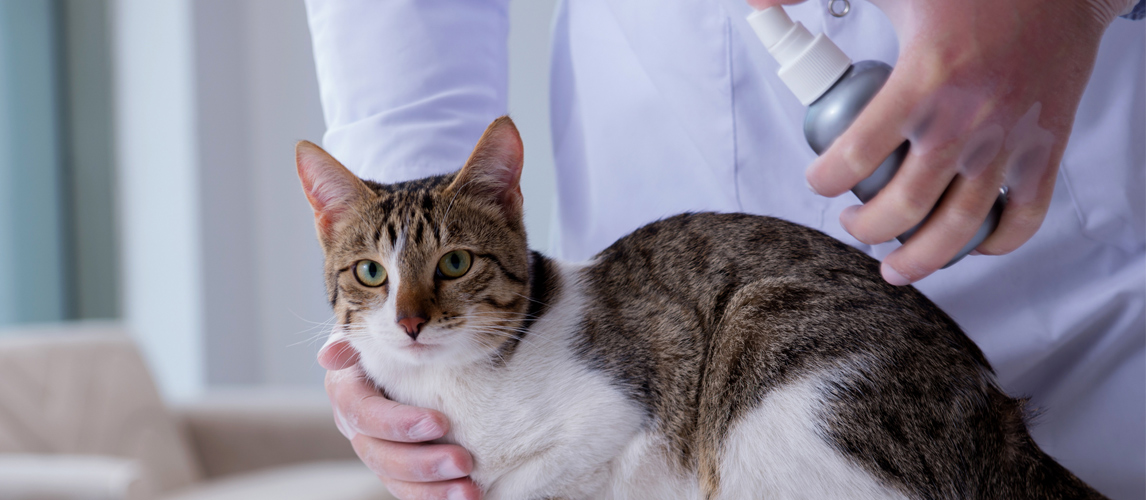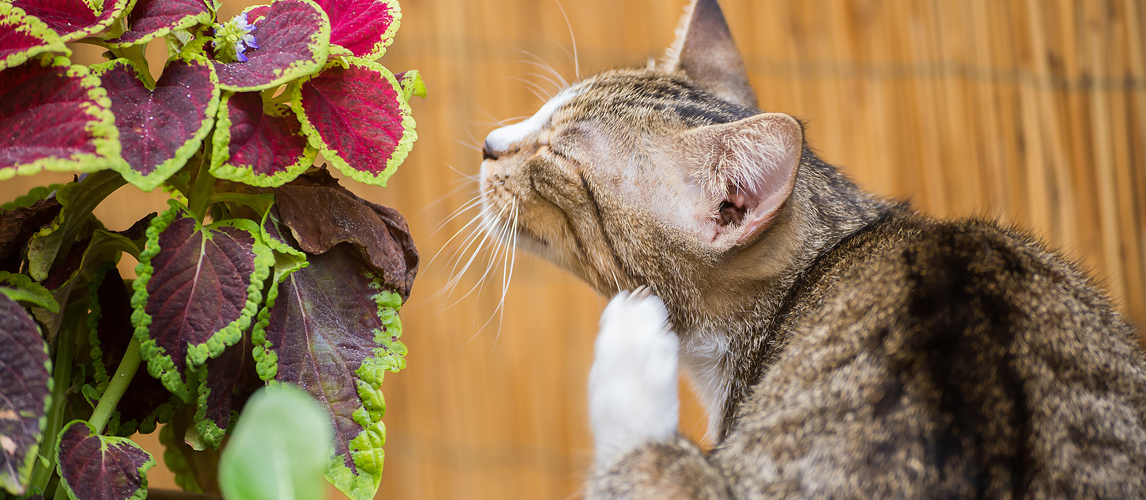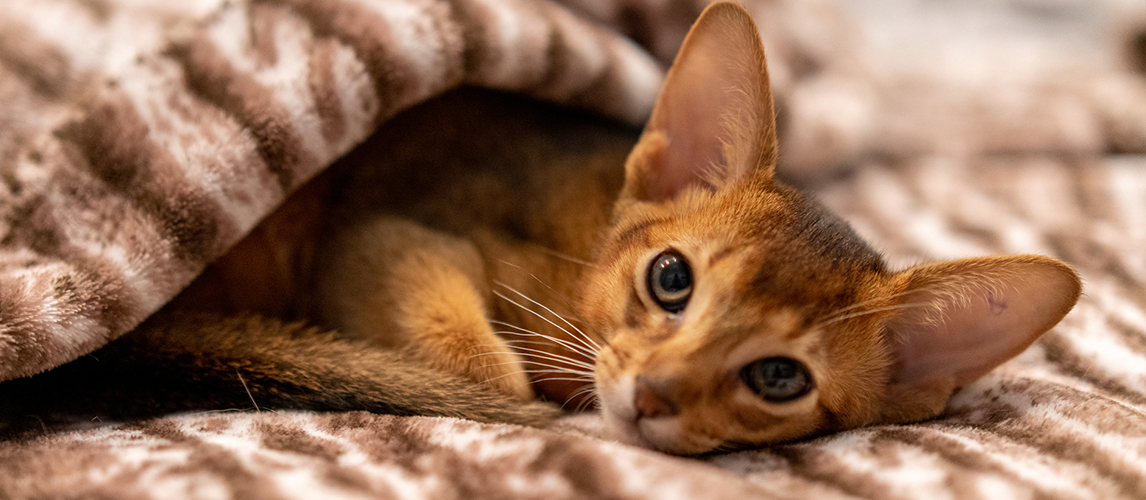You can’t scroll through your social media feeds without coming across a cute video of a cat dreaming. It could be an adorable kitten trembling as he has a nightmare or a ginger tom apparently riding a bike and then falling off it!
To us, as humans, it looks unmistakably like a dream but do we know enough about cat sleep patterns to be sure that this is true? Let’s take a closer look at how, when and why our cats sleep and what that tells us about kitty dreams.
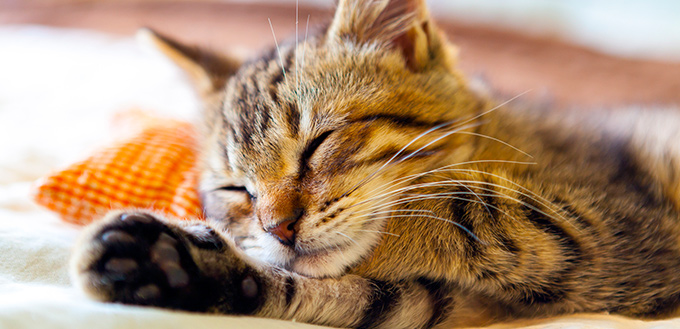
Cats and Sleep
Feline sleeping patterns are unique. It will come as no surprise to you that cats sleep a lot! Here are some cat sleep facts that you may not know:
- Cats can sleep for up to 20 hours a day. An adult cat spends an average of between 13 and 18 hours sleeping in a 24 hour period. Kittens need even more sleep than this and can sleep for 20 out of 24 hours!
- Cats are not lazy. Despite the fact that they spend two-thirds of their lives sleeping, cats are not actually lazy. They need this amount of sleep to stay healthy and it’s all part of the way in which they have evolved from wild cats.
- Cats are crepuscular. This means that they are most active at dawn and dusk and in nature they would spend most of the remainder of the day sleeping.
- Cats can adapt their sleep patterns. We have to remember that cats are domestic animals now and are therefore very sociable and good at adapting. They are perfectly capable of adjusting their sleeping habits to fit in with their human family. They will certainly adjust their sleep routine to make sure they turn up at meal times. If you are lucky, they will wake up to spend time with you!
All members of the cat family are predators. Wild cats use up a huge amount of energy catching prey and this happens usually at dusk, dawn and at night. At other times, they sleep to conserve their valuable energy for the hunt. Your kitty is just following this inherited sleep pattern. Cat diets are high in protein (meat) and scientists think that this promotes sleepiness in all carnivores (meat eaters). A little-known fact is that rain can actually make your cat sleepier.
New-born kittens are asleep most of the time! In the wild, this helps to keep them safe because it stops them from wandering away from the nest and protects them from predators. Whilst they are sleeping, they are growing and developing
Boredom does play a role in sleep patterns in domestic cats and if you provide plenty of toys, or even a companion, your kitty may nap less.
It may be natural for your cat to sleep a lot but excessive sleeping can be a sign that your kitty is depressed or ill. Take time to notice the usual sleeping pattern and, if this changes, have a quick word with your vet. Breed, age, temperament, and overall health are all big factors in determining exactly how much sleep your cat needs.
Related Post: Best Cat Toys
Where Do Cats Like To Sleep?
Cats like to sleep somewhere that is warm and safe. You may have found your kitty precariously balanced on a radiator on more than one occasion. They are notorious for sneaking into discarded cardboard boxes and even suitcases! They love covered cat beds that make them feel secure when they are napping.
Their preference will be a cat bed where they are less likely to be bothered by other animals or humans. In the wild, they would have sought out holes in rocks, tree trunks or undergrowth to hide away from predators whilst they rested. In a modern home, they need a bed to do this.
Warmth is another important factor and cat beds keep your kitty nice and cosy when they nap. Cats don’t like draughts and will find it hard to sleep in cold, draughty surroundings. They also love to sleep on cushions which insulate them from the cold and in the sun rather than the shade.
Related Post: Best Cat Beds
Characteristics of Cat Sleep
Cats display a combination of dozing and very deep sleep. A kitty doze (the classic ‘cat nap’) lasts for around 15 minutes and during the nap, your cat’s body is positioned so that they can spring into action at a moment’s notice. Cat’s sleep is characterised by a number of short sleep phases rather than one long eight hours sleep pattern.
Kitties are similar to humans in that they have different stages of sleep. They experience phases of Rapid Eye Movement (REM) sleep and periods of non-REM sleep that occur in frequent cycles. They are light sleepers and will wake at the slightest sound or touch. In the wild, this prevents them from being so vulnerable to attack and allows them to escape predators.
When your cat is in REM (Rapid Eye Movement) sleep, their brain activity causes their body to twitch and suddenly move, which looks so cute. During non-REM sleep, they are in a state of deep restfulness and do not move.
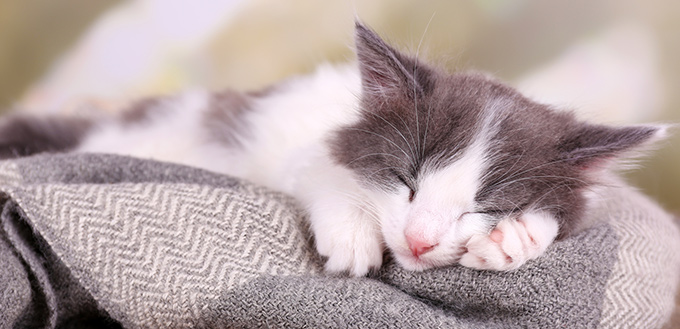
Cat Dreams and REM Sleep
Humans experience their dreams during the REM sleep phase and there is evidence to suggest that cats do as well. In fact, laboratory studies of brain activity have indicated that all mammals dream. Obviously, we can’t ask them about their dreams, but the electrical brain activity during the feline REM sleep phase strongly indicates the presence of dreams of some sort.
Brain activity is the same when an animal is REM sleep as when they are awake. This is when a cat may move around in their sleep. The sleeping puss will appear most physically active but is in the deepest sleep. During sleep, the brain is processing information that it has collected during the day.
It makes a great YouTube video! Kitties appear to be running, climbing or even riding a bike! You may think that this gives an indication of what they are dreaming about but research has shown that dreaming activity actually occurs during the moments when they are still.
Kittens spend longer in REM sleep than in older cats and this is probably because they are processing such a lot of new information.
What Do Cats Dream About?
There is a part of the brain called the hippocampus which controls memory in humans and as it is so structurally similar in cats, it is likely that it governs cat memories too. The memories are therefore likely to play a big part in their dreams.
The electrical activity pattern in a sleeping cat’s brain is also remarkably similar to that of a sleeping human’s which provides evidence that cat dreams will be very similar to humans. Added to this is the fact that cats are fairly intelligent creatures and so it reasonable to assume that their dreams are similar to humans. The experts think that cat dreams are probably a mixed-up version of what goes on your kitty’s everyday life! We don’t know if they get the abstract dreams that humans can experience.
Dreams provide a method for the brain to process information. It is likely that kittens dream more than adult cats because they have more information to process. Your kitty may dream about hunting, playing, running or about being with you! It is reasonable to assume that some of their dreams are not pleasant and a ‘cat nightmare’ is a distinct possibility.
Yes, They Do Dream!
The overall message is that sleeping is a big part of your kitty’s life. As dreaming occurs during sleep, you can bet that they dream a lot too! The scientific research into feline sleep patterns, and into brain activity when sleeping, provides strong evidence that cats do indeed dream. What they dream about is still something of a mystery but the best guess is that they dream about the same things that you and I do; what they get up to during a normal day.
As for the YouTube videos of a cats moving their feet in a cycling motion or appearing to be hunting prey – that is unlikely to be caused by a dream. Cats are more likely to be absolutely still when they are dreaming and the cycling action is just involuntary movements during REM sleep. Sadly, the scientific facts are not as cute as a kitty dreaming about riding a bike!


